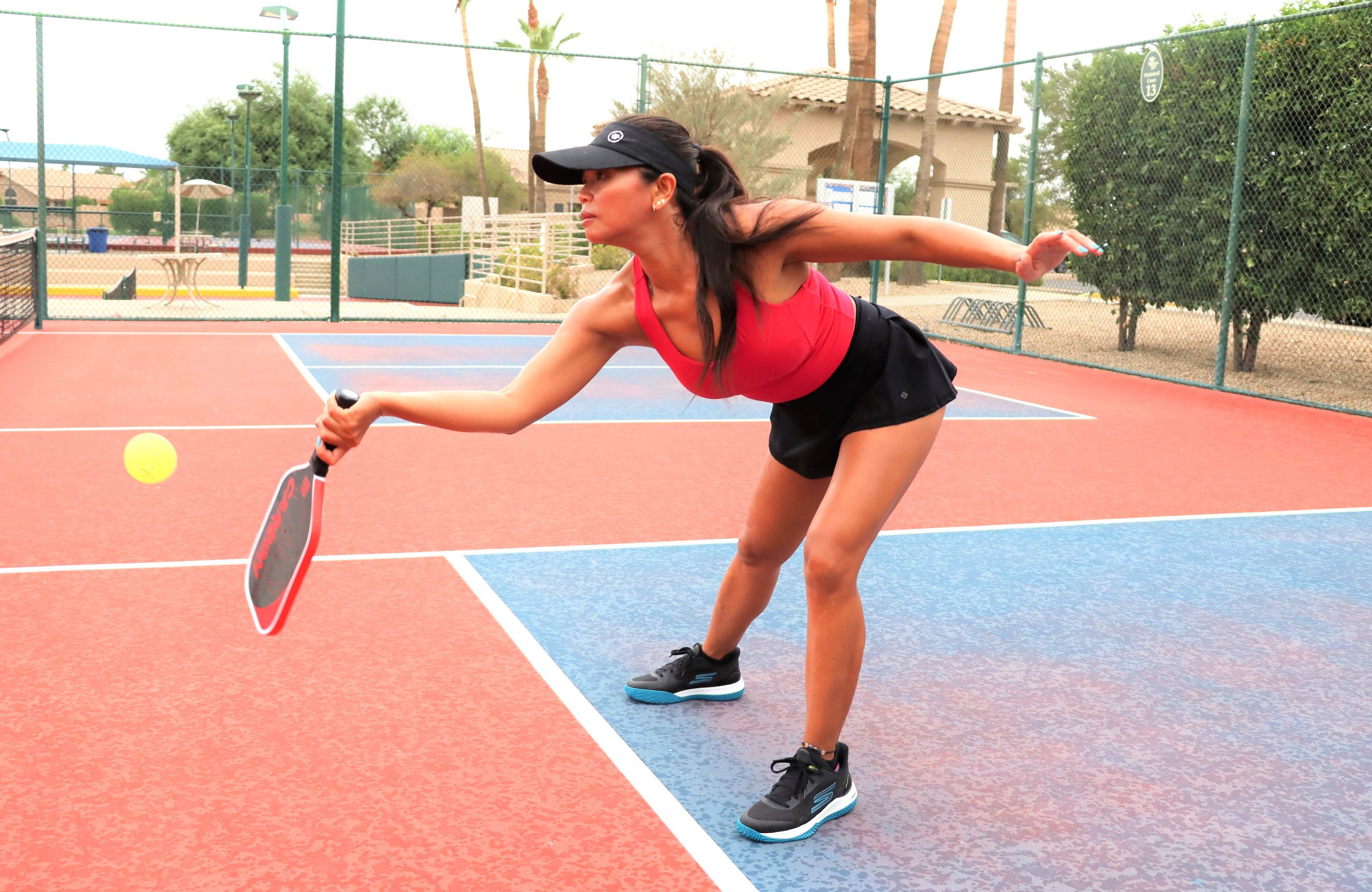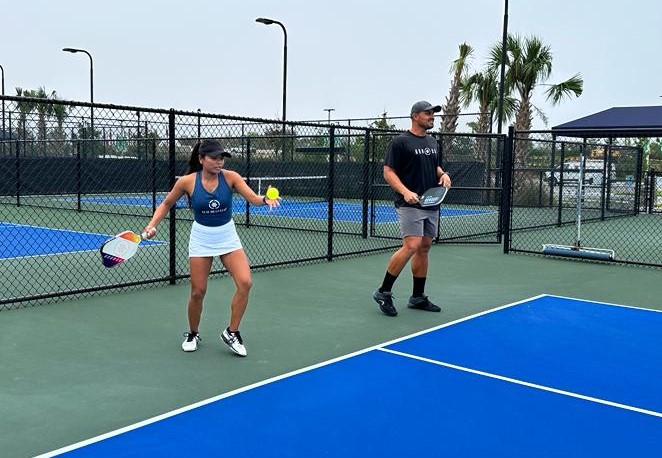My students often tell me they find dinking stressful. When we explore why so many beginners to intermediate pickleballers feel stressed about dinking, it seems mostly to be related to the decisions that have to be quickly made each time a dink shot is executed. So, can we make the decision-making associated with dinking easier and less stressful?
Dinks are typically not traveling with great velocity, but you still have only a fraction of a second to decide how to return a dink from among several different options. The primary reason you have so little time to decide how to return a dink, is the fact you need to know exactly where your opponent’s dink is going to land before you can decide how to return it.
If your opponent’s dink lands into the kitchen very close to the net, you don’t have much of a choice about how to return it – you should let the ball bounce and take a step forward and hit a soft dink return. If the dink is going to land a bit further away from the net, in front of your non-volley line, you will have to choose between two options. The first option is to extend your paddle forward and gently dink volley the ball before it hits the ground. The second option is to take a step backward, let the ball bounce and then hit your return shot – probably a dink return. So, which of these two options is best?
For most players, stretching out and taking the ball out of the air is more difficult than letting the ball bounce, but this is the preferred shot selection for one important reason. A return dink hit in the air before it bounces gives your opponent much less time to prepare how they are going to return your shot. You might be able to rush them into making a bad shot because they were rushed. The best target in this case is to softly dink the ball, towards the middle T of the court or crosscourt.
If you decide to take a step back and let your opponent’s ball bounce, you will be giving them more time to re-position themselves and prepare to return your shot, but you will also have more targeting options. With respect to targeting, let’s first emphasize it’s advantageous to return your dinks cross-court because these shots are less likely to go into the net or out-of-bounds. So, you should hit around 80% of your dink returns cross-court and 20% straight ahead. In terms of specific targets for your dinks, two good targets are your opponent’s feet and open areas between your opponents or near the sidelines, two good targets are your opponent’s feet and open areas between your opponents or near the sidelines.
As you engage in dinking exchanges, try to move your opponents around to put them out of position and to create gaps between them so you can hit an aggressive shot for a winner. Try to avoid dinking directly at the opponent, unless you’re targeting their feet, or right at their playing shoulder and don’t let your dinks get too high or they will be attacked.
The most difficult dink to return is the shot that lands close to your feet causing you to hit a half-volley. Half-volleys are very difficult to control. Perhaps the easiest shot to return in a dink rally is the ball that goes high over the net with too much pace so you can execute an aggressive volley.
.
The final shot you might encounter during a dinking rally is a lob. Lobs can be particularly effective after exchanging several dinks and noticing your opponents are leaning forward, with their paddles pointing downward, waiting for your next dink. You need to wait for a dink that bounces a bit high and not too close to the net. A good lob from the non-volley zone line is long exaggeration of dinks. Be certain you hit your lob over the heads of your opponents, or they will have an easy overhead shot. Try to target your lob for the middle to the court, but more to one side so your opponent’s only hope of a return will be a backhand overhead shot.
Let’s summarize by assigning a priority to all of the dink return options. Having these shots prioritized will make your decision-making about how to return dinks, much easier and thus less stressful:
1. First Priority – Punch or Reset Volley
If the ball is high enough – attack it. Take the initiative when the opportunity presents itself.
2. Second Priority – Dink without Bounce
This shot gives your opponent little time to prepare. By hitting the ball in the air you have more opportunity for an attack shot right at your opponents playing hand/ shoulder.
3. Third Priority – Dink after Bounce
You will lose any surprise/quick return advantage. This shot is use if your opponent pushes a wide dink to your forehand or backhand and you need to reset your shot to gain your control back to ready position.
4. Fourth Priority – Lob
This can be an effective offensive shot, but you have to wait until the perfect opportunity presents to you. You can’t rush a lob shot off of a dink, you must wait for when the ball is in front of you to have a good lob. This shot will not work if you are trying to lob while you are lunging to a side.
5. Fifth Priority – Half Volley
The half-volley is a difficult shot to return and gives you limited targeting potential. This is why you should try to target the feet of your opponents so they will be forced to execute a half volley shot.
Having a clear understanding of the priorities for deciding how to respond to soft shots landing in your kitchen will help reduce the stress associated with dinking. The other important factor is patience. Don’t be in too much of a rush to make an aggressive shot during a dinking rally. Stay calm and keep moving your opponents around their no-volley line and wait for a gap between them to emerge or a ball hit to you that is higher than intended, so you can attack it with a volley. Relax while dinking and aim for your opponent’s feet to force a half-volley return that often results in a pop-up. Create your opportunities with dinks and don’t go for aggressive shots without seeing a clear opportunity.






